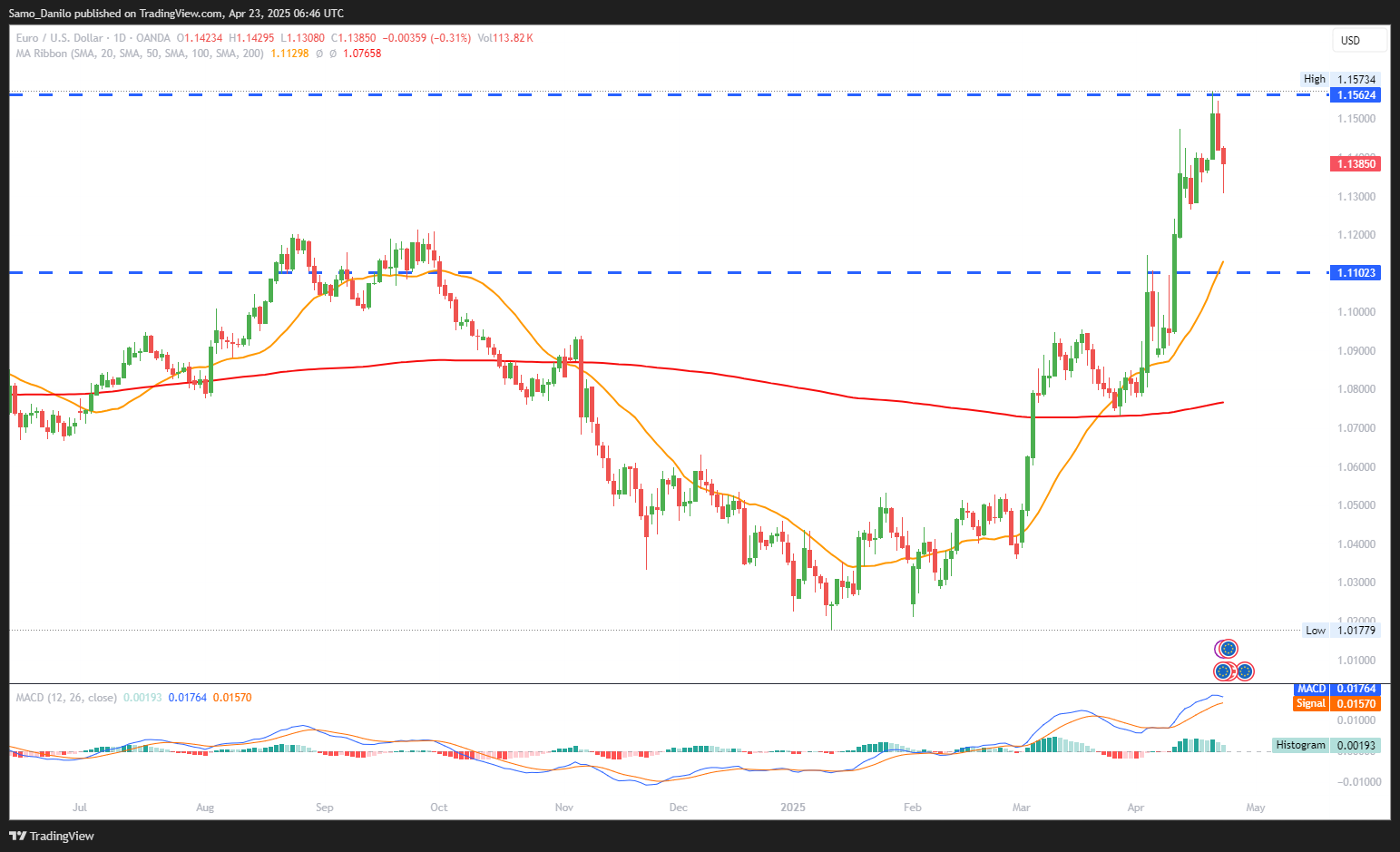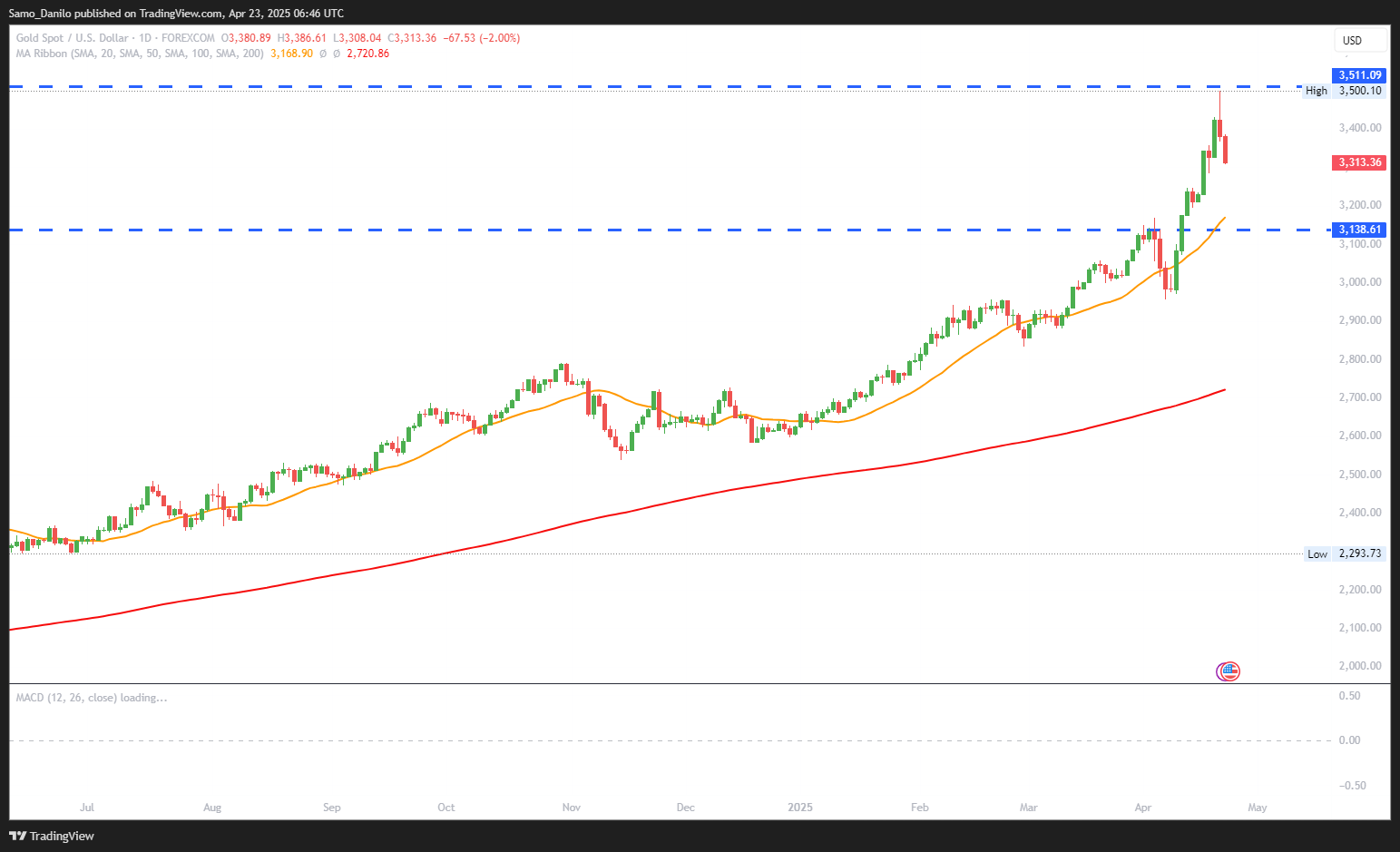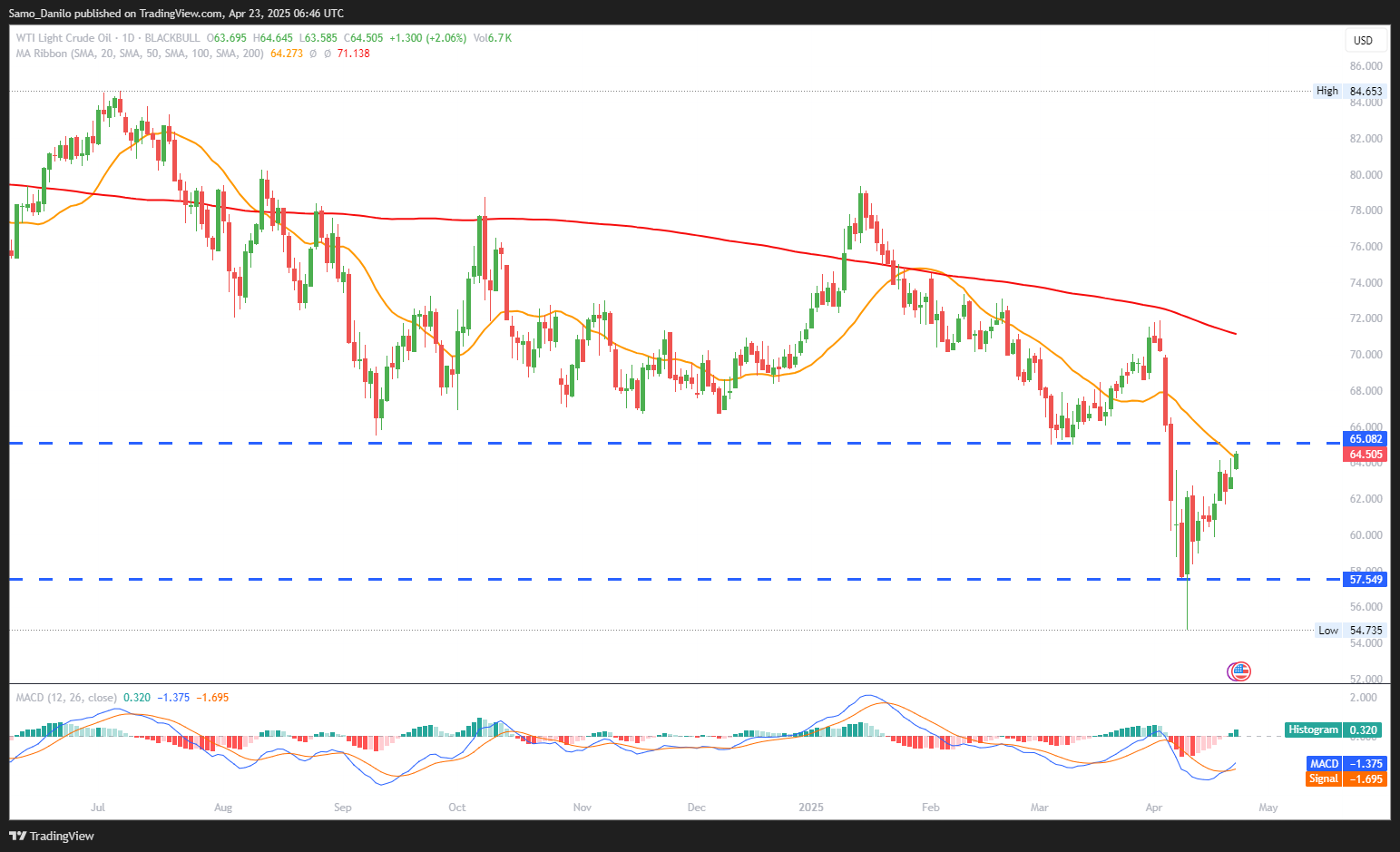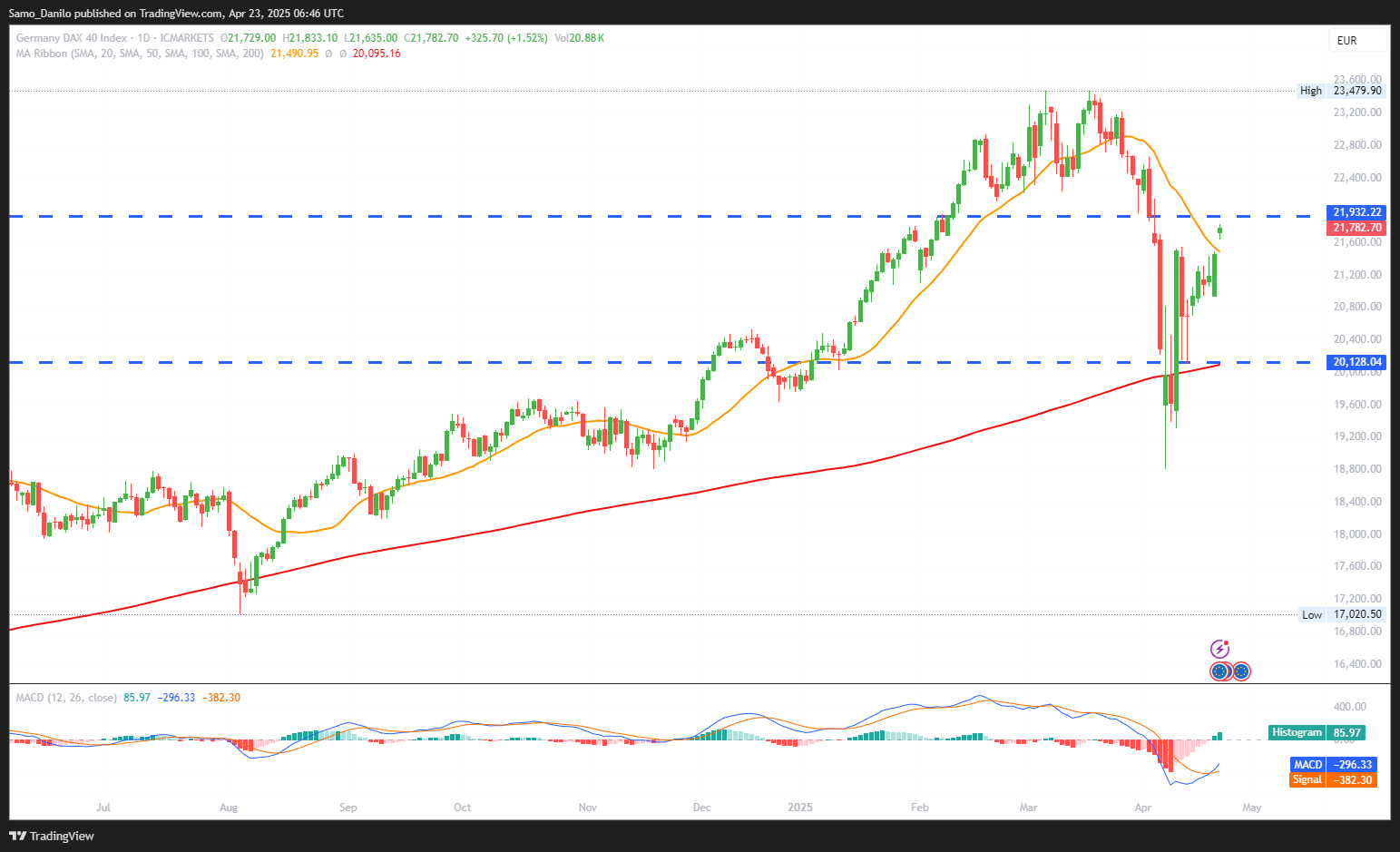EURUSD
- EUR/USD Price: The EUR/USD pair is retreating for the second consecutive session, falling from the 1.1300 region due to a renewed recovery in the US Dollar from multi-year lows. The stronger USD reflects broader sentiment shifts and potentially reduced near-term Euro upside.
- Trade Deals: The White House indicated progress in US trade deal negotiations, softening concerns over Trump's earlier tariff threats. This development supports the USD rebound and adds downside pressure on the Euro.
- Fed’s Stance: Fed Governor Adriana Kugler signaled a hold on rate changes, citing inflation risks from larger-than-expected tariffs. This reinforces a cautious Fed, even as the market increasingly expects future cuts.
- ECB Rate Cut: Markets are pricing in a 75% probability of a June rate cut from ECB, rising from 60%. Diverging expectations between central bank signals and market bets could increase volatility.
- PMI Data: Attention turns to the Eurozone and German PMI figures, due Wednesday, which are expected to provide forward-looking insight into economic health. A weak reading could further pressure the Euro.
Closing statement: EUR/USD is currently navigating downward pressure from USD strength and diverging rate expectations, while investors await Eurozone PMI data for clarity. Near-term direction will hinge on the balance between US monetary policy tone and Euro area growth indicators.
GBPUSD
- GBP/USD Price: The GBP/USD pair has extended its decline, slipping to around 1.3300 after reaching a seven-month high of 1.3424 in the prior session. The retreat reflects profit-taking and renewed caution amid evolving global risks.
- BoE Rate Cut: Market speculation is rising that the Bank of England may cut interest rates at its upcoming May meeting. This is being driven by global economic uncertainty, making the Pound vulnerable to monetary easing expectations.
- UK-US Trade Deal: The UK faces added pressure from Trump’s imposition of new tariffs, including 10% levies and 25% duties on steel and foreign vehicles. These trade developments undermine the UK’s external trade outlook and weigh on GBP sentiment.
- WSJ Reports: The Wall Street Journal reported on Tuesday that the Trump administration is preparing its terms for trade talks with the UK, aiming for London to reduce levies and other non-tariff barriers on a wide range of US goods.
- US PMI Data: Investors now await the flash S&P Global Manufacturing and Services PMIs for April from the US. These readings will shape expectations for US economic momentum, thus impacting USD flows and GBP/USD dynamics.
Closing statement: GBP/USD is experiencing a moderate pullback driven by a combination of rate cut speculation, trade-related concerns, and broader risk sentiment. Near-term direction will hinge on US macro data releases and any clarity in UK-US trade talks.
XAUUSD
- XAU/USD Price: Gold prices have eased below the $3500 all-time high reached on Tuesday, as safe-haven demand softens in response to improving global risk sentiment. This marks a near-term correction after an extended bullish rally.
- Trade Optimism: President Trump reassured markets by downplaying the possibility of severe tariff hikes in US-China trade, clarifying tariffs would not rise to 145%. The maintenance of current tariff levels and positive tone helped reduce demand for gold as a hedge.
- US Treasury Secretary: Treasury Secretary Scott Bessent called the trade dispute with China "unsustainable," expressing confidence in a resolution. His remarks further dampened risk aversion, pulling investors away from traditional safe-haven assets like gold.
- Geopolitical Easing: Russian President Putin’s openness to direct talks with Zelenskyy has contributed to an improvement in geopolitical sentiment. This move undermined safe-haven flows, which had been supporting gold prices at elevated levels.
- PMI Data: Traders now await the S&P Global preliminary Manufacturing and Services PMI releases from the US and Europe. These data points are key for gauging economic resilience, which will influence USD strength and, consequently, gold pricing.
Closing statement: XAU/USD is retracing from record levels amid diminishing geopolitical and trade-related risks. Near-term movement will depend on PMI data and whether positive sentiment persists, potentially limiting gold’s upside in the short run.
CRUDE OIL
- Crude Oil Price: West Texas Intermediate (WTI) crude continues its upward momentum, trading around $64.50 per barrel during European hours on Wednesday. This marks the second straight session of gains, supported by geopolitical and inventory factors.
- US Sanctions: Fresh US sanctions on Iranian oil operator Seyed Asadoollah Emamjomeh and his corporate network have heightened concerns over Middle East supply disruptions, reinforcing the bullish undertone in the oil market.
- API Report: According to market sources, the American Petroleum Institute (API) reported a 4.6 million barrel drop in US crude stockpiles last week. This steep draw signals tightening supply conditions, lending additional support to prices.
- Trade Talks: White House Press Secretary Karoline Leavitt announced that 18 countries have submitted trade offers, with the US currently engaging in talks with 34 countries. This improves global trade sentiment, which tends to correlate positively with oil demand expectations.
- EIA Data: Markets now await official Energy Information Administration (EIA) inventory data, due later today. Reuters' consensus forecast points to a decline of around 800,000 barrels, and any deviation from this could cause short-term price fluctuations.
Closing statement: WTI prices are rallying on strong geopolitical catalysts and sharp inventory drawdowns. With official EIA data pending, bullish momentum may continue if reported figures confirm tightening supply and broader trade developments remain constructive.
DAX
- DAX Price: DAX futures jumped over 500 points, with the index closing 0.41% higher at 21,294, fueled by a temporary de-escalation in tariff rhetoric. The uptick signals renewed risk appetite among investors despite underlying macroeconomic headwinds.
- IMF Outlook: The IMF revised down its 2025 GDP forecast for Germany, attributing the slowdown to US tariff pressures. Growth is now projected at 0.0% for 2025 and 0.9% for 2026, down 0.3 and 0.2 percentage points, respectively, highlighting a bleak medium-term economic trajectory.
- Automakers Rally: Shares of German automakers surged on April 22 amid speculation that President Trump may postpone auto-related tariffs. Volkswagen (+3.04%), Porsche (+2.96%), Mercedes-Benz (+2.37%), and BMW (+2.16%) all benefited, lifting the broader DAX.
- Consumer Confidence: The Eurozone Consumer Confidence Index fell to -16.7 in April, down from -14.5 in March, reflecting deteriorating household sentiment amid uncertainty over trade and inflation dynamics.
- US PMI Data: Investors await the S&P Global Services PMI on April 23, expected to decline to 52.8 from March’s 54.4. The data may influence global risk sentiment and offer insights into US economic resilience, indirectly impacting European markets.
Closing statement: The DAX is holding firm on auto sector optimism and temporary trade relief, but macro risks remain elevated. Markets will closely monitor upcoming PMI releases and global trade headlines to assess whether the bullish momentum can be sustained.




